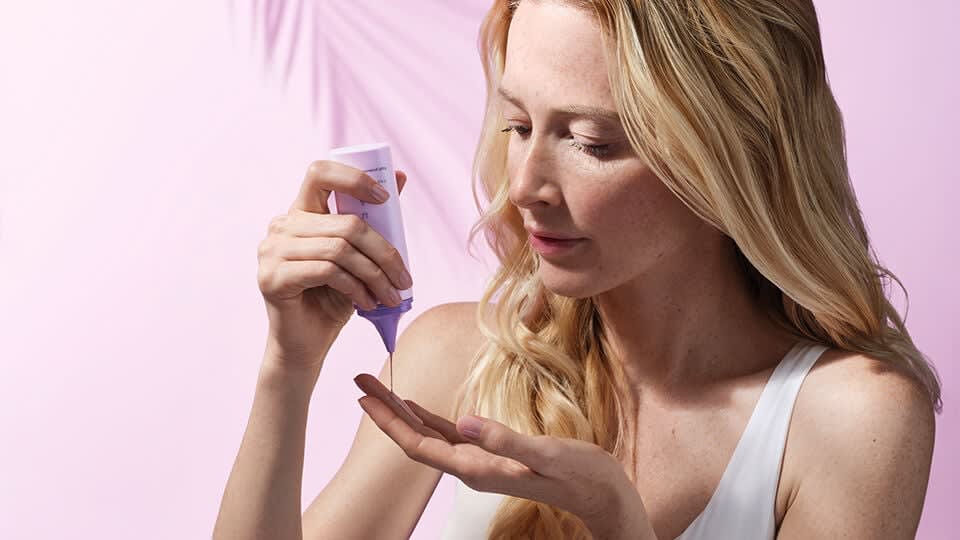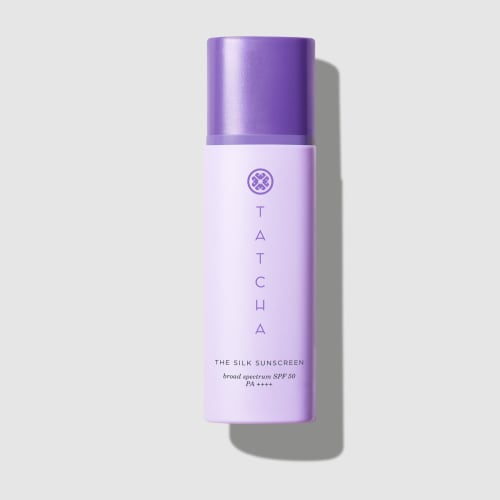Even after acne has subsided, redness can still persist. As it turns out, there’s a name for this particular pinkness—and skincare solutions for it, too.

Sometimes, our skin gets red. Capillaries webbed just beneath the skin may dilate in an area, resulting in a visible local reddening. Dermatologists call it erythema, but we call it blushing or flushing. It’s a beautiful thing.
In most cases, redness is harmless. It can be caused by an emotional stimulus, like shame or stress—one of the many ways in which our skin telegraphs the state of things—or merely have to do with genetics. Other times, redness can be a sign of an underlying imbalance, like an infection or allergy.
Redness commonly accompanies skin issues. It’s usually easy to distinguish redness caused by sun damage and erythema despite their similar appearance, as the former is much more uncomfortable to the touch. Eczema and psoriasis also produce red, dry, flaky skin. And acne is almost always associated with redness. If you had to close your eyes and imagine a zit, what color would it probably be?
On top of the regular considerations of skincare for acne-prone skin, dealing with redness can seem not worth the effort. But the truth is that it’s as easy as simply discovering new ingredients that are known to calm skin, reducing acne-related redness in the process.
Where does redness come from?
The Human Phenotype Ontology defines erythema as “redness… caused by hyperemia of the capillaries in the lower layers of the skin.” When these channels receive a sudden rush of blood, the areas of skin above them take on a pinkish hue.
There are nearly countless reasons our skin might be red. Maybe it’s too cold outside, or too hot inside. Maybe you have eczema, or an embarrassing memory. Whatever the reason, redness is usually nothing of concern—until it accompanies other visible or tactile changes to skin. Changes in skin texture may be a sign of inflammation or imbalance. More often than not, redness is a sign that your body’s circulatory system is doing its job. When it comes to your skin, it merely says “pay attention!” to wherever zone it appears.
Does acne cause redness?
Redness is typical of acne. But when skin turns red, what’s going on under the surface? Acne is usually red because its arrival triggers skin’s wound healing response. Imagine that, as bacteria rages in the confines of a blocked pore, an alarm goes off throughout the body; suddenly, blood is sent to triage the pore, causing the area to become red and hot.
It’s not uncommon for this inflammation to leave redness in the skin even after the issue has been quelled. This is known as post-inflammatory erythema, or more specifically, post-acne erythema. Like any other infection, acne takes time to heal, and a lot of the healing is not immediately visible. In other words, it can take longer than it might seem for the inflammation from a breakout to heal even if the bumps themselves have long gone.
How can I relieve redness?
Dermatologists and other skin experts recommend soothing solutions for relieving redness. These can come from a variety of sources, from household hacks to rare plant extracts. Some are likely in your medicine cabinet right now.
Calming treatments, like cold compresses. In fact, a little ice can go a long way: Vogue interviewed dermatologists who recommended applying ice cubes (wrapped in a towel or cloth) to clean skin as a means to quiet down red, angry skin.
Nourishing vitamins, like niacinamide. A form of vitamin B3, niacinamide is a popular ingredient noted for its anti-inflammatory abilities. This helps it visibly even skin tone, though it’s also been known to improve the appearance of pores, too.
Common superplants, like aloe vera. There is plenty of research that backs up the skin-soothing properties of plants like aloe vera and witch hazel, which is probably why these ingredients are found in all sorts of skincare formulations that moisturize and protect skin.
Rare botanicals, like Japanese indigo. Other plants are harder to find, but their benefits are all the more treasured. Indigo extract, more famous for its applications as a dye, is regarded for its deeply soothing and restorative powers. (Centuries ago, warriors even used indigo-dyed textiles to dress their wounds.)
A skincare routine to reduce redness from acne
In general, a good approach to avoiding redness is to keep things calm. A streamlined, twice-daily skincare routine can help ensure your skin remains clean and moisturized, minimizing potential for breakouts in the first place—but you can also tailor-make your regimen to keep soothing redness a top priority by choosing the right ingredients and skincare steps. (Before switching up to your routine, it’s a good idea to talk to your dermatologist or licensed aesthetician about what might work for your skin type.)
Take Tatcha’s collection of skincare formulas, inspired by Japanese ingredients and beauty rituals—such as the camellia oil that geisha performers would use to lift makeup from their petal soft skin, or the rice bran that could polish cheekbones to glowing. These two steps assemble the Kyoto Cleanse, a process that can benefit any skin type. First, the Camellia Cleansing Oil helps to clear the skin and remove excess oil. Then, the Rice Polish can slough away lifeless skin cells, so skin is ready to receive care.
Following that, a calming moisturizer is your best bet for reducing redness. The Water Cream, a lightweight formula made for oilier faces, can smooth out skin tone (and refine pores in the process). But those with drier or sensitive skin might opt instead for the Indigo Calming Cream, which pairs Japanese indigo with superlatively-soothing colloidal oatmeal. The Indigo Calming Cream also provides powerful relief, and boasts a seal of acceptance from the National Eczema Association.
To top it all off, don’t forget the most important part of your routine: Sunscreen. Sun damage may not seem to have a lot to do with redness from acne, but when it comes to skin, it tends to make everything worse. Especially if you’re prone to redness in the first place, make sure you keep a high SPF on at all times. All the better if it includes calming ingredients like Tatcha’s Silk Sunscreen, with niacinamide and hyaluronic acid, and SPF 50. Sunburn is one form of redness we can avoid completely—and we’d better, too.






